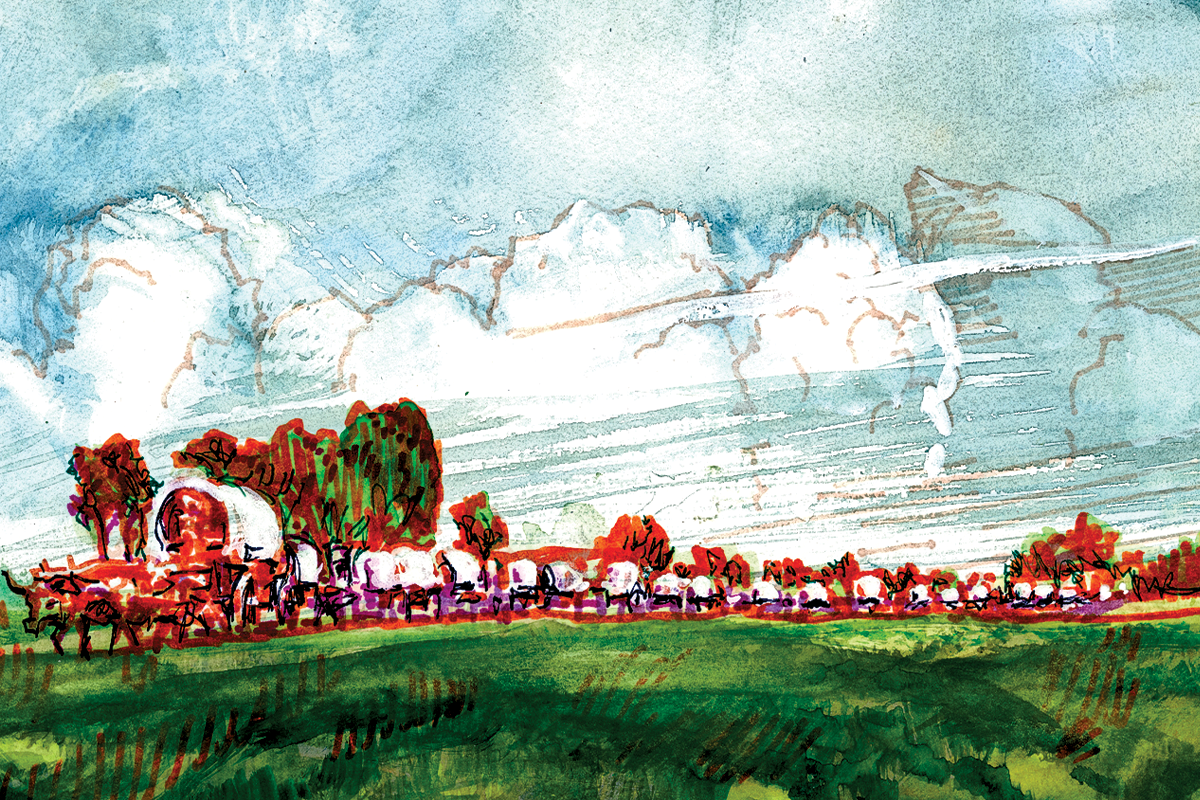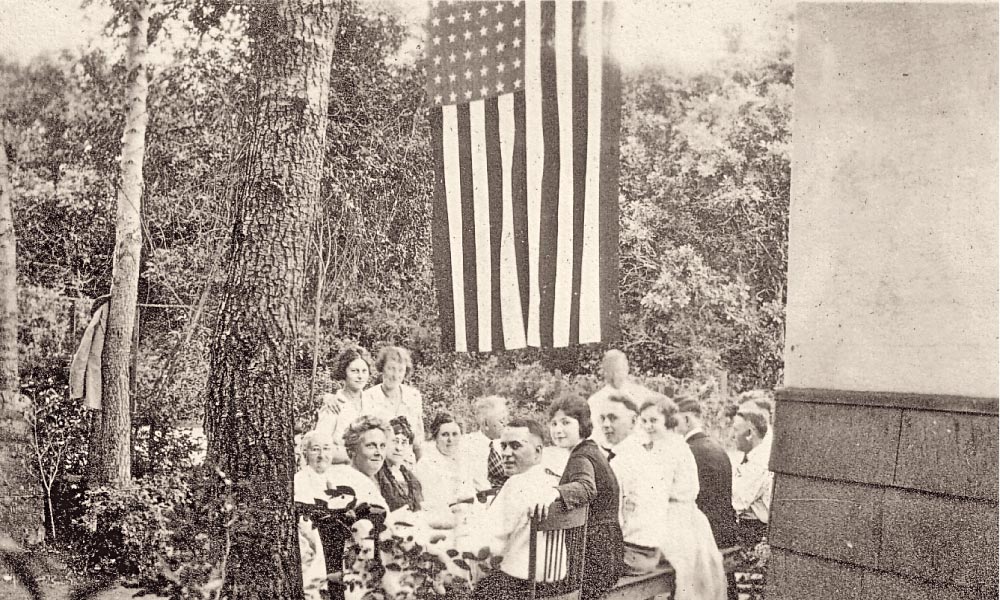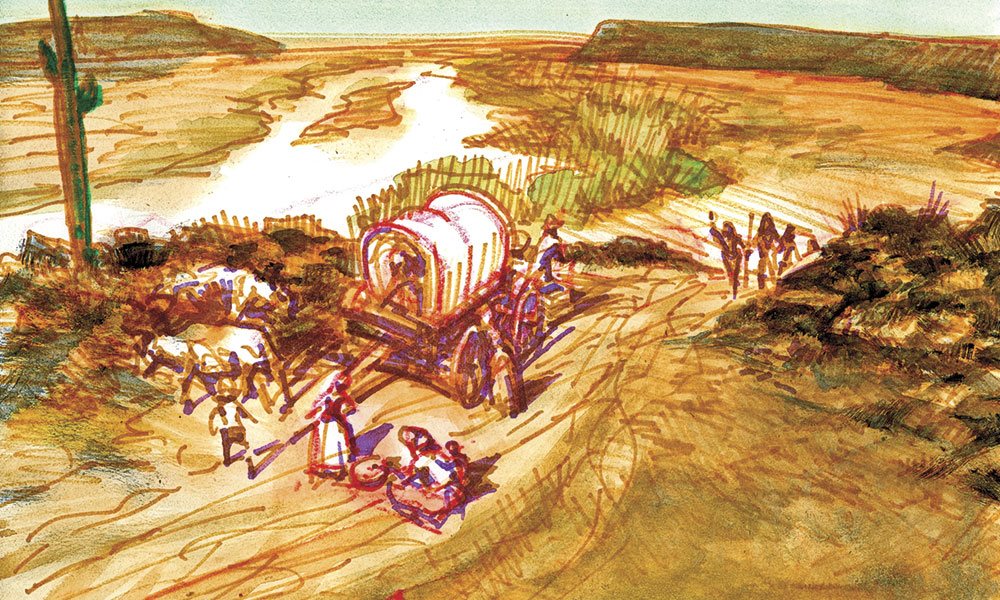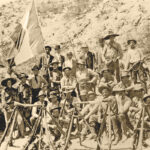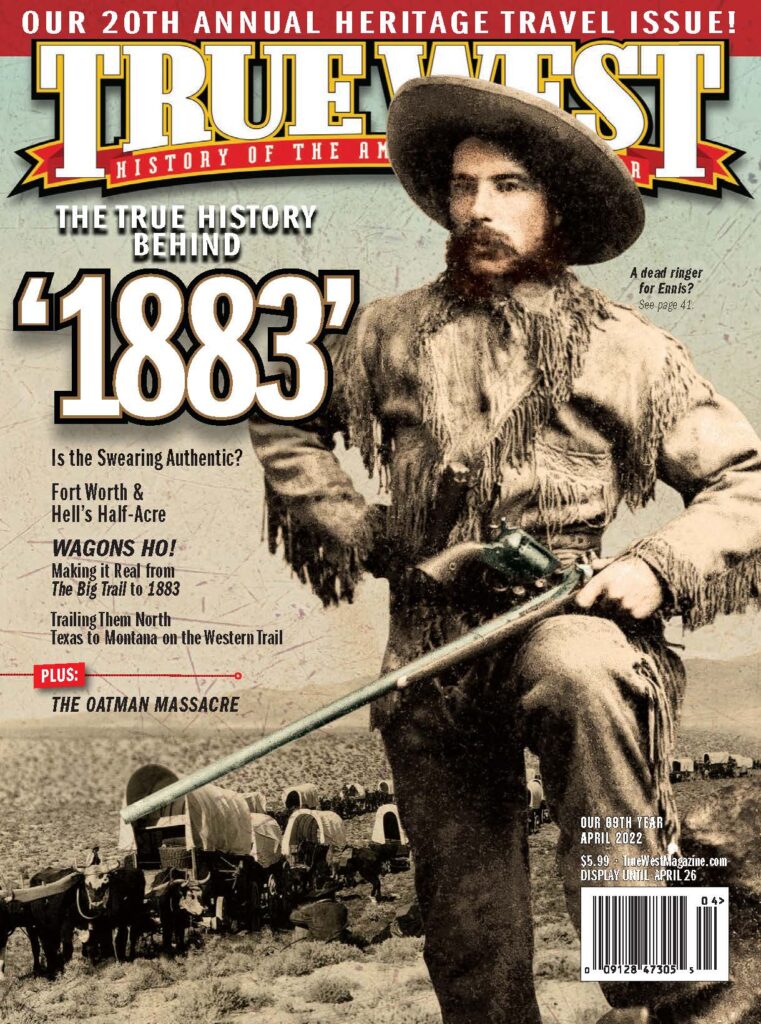– Illustrations by Bob Boze Bell –
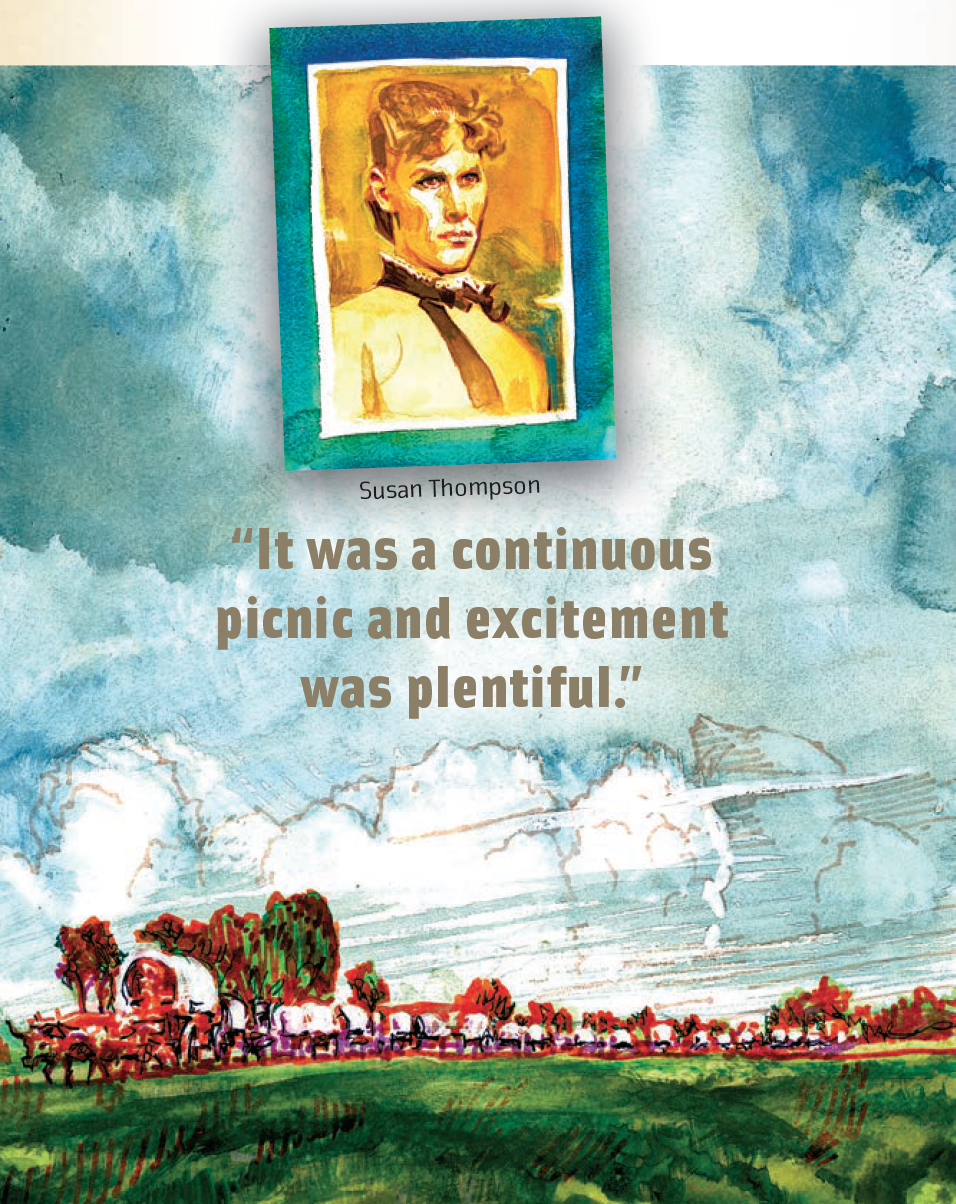
Like so many bad trips, this one started out as a fun adventure. The so-called Brewster wagon train departed Independence, Missouri, on August 10, 1850. Ninety-three religious pioneers, seeking a life in the Land of Bashan, headed west in 43 wagons, loaded down with eight months’ worth of provisions.
“It was a continuous picnic and excitement was plentiful” is how Susan Thompson described the journey she took at the age of 17.
She described the food prepared: “The stores of jerked meat, dried apples and berries, flour, corn beef, meal, preserved fruits, bacon and beans that we had prepared during the spring months.”
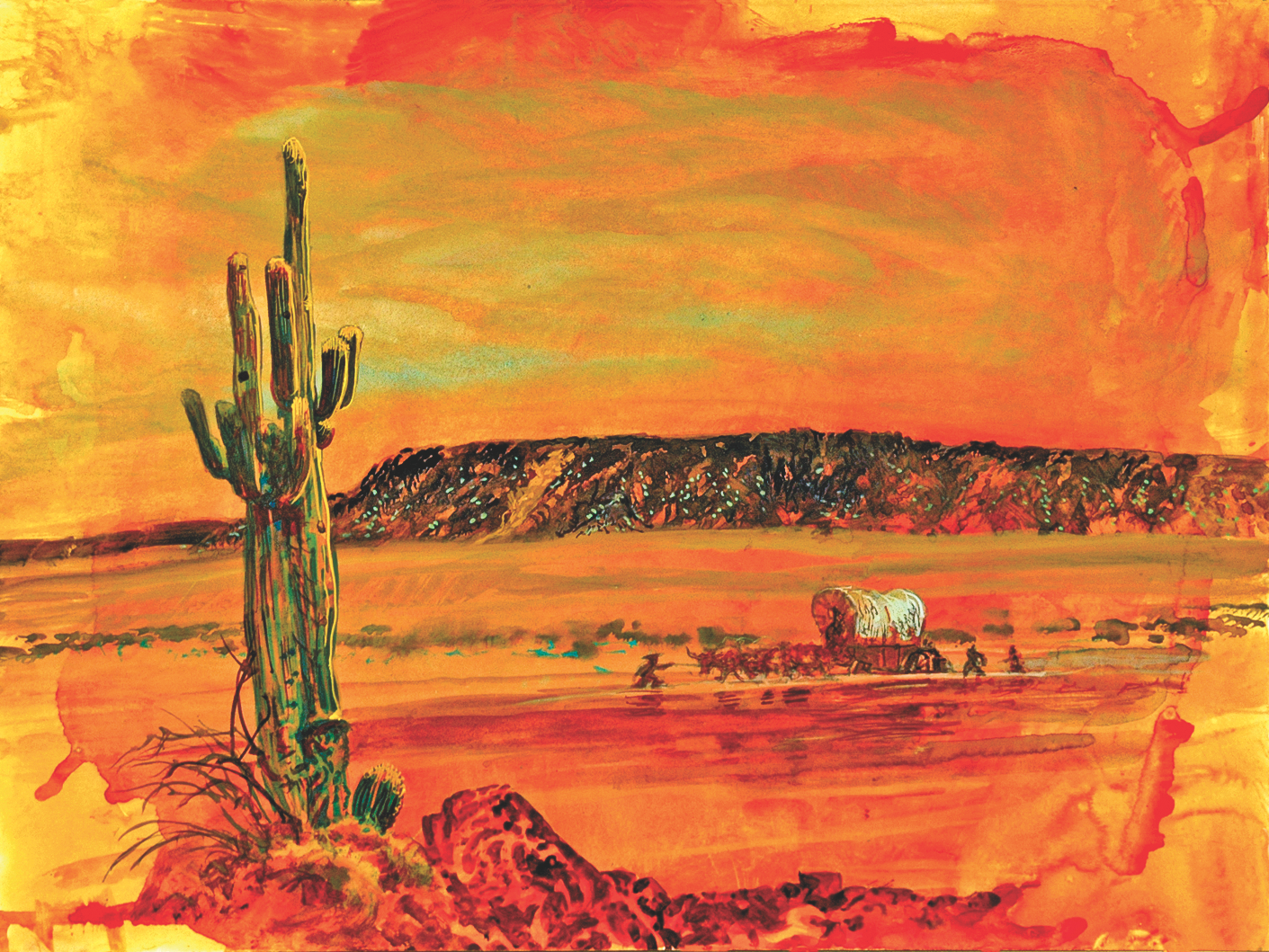
The wagons stopped every two or three days, she added, “while the women baked and washed, the men hunted for antelopes or buffalos or smaller game…. Often, when we were camping near a stream, we had quantities of fresh fish.”
“…In the evenings we gathered about the campfires and played games or told stories, or danced…the young folks danced in the light of the campfire and lard-burning lanterns…. There was plenty of frolic and where there are young people gathered together, there is always plenty of love-making.”
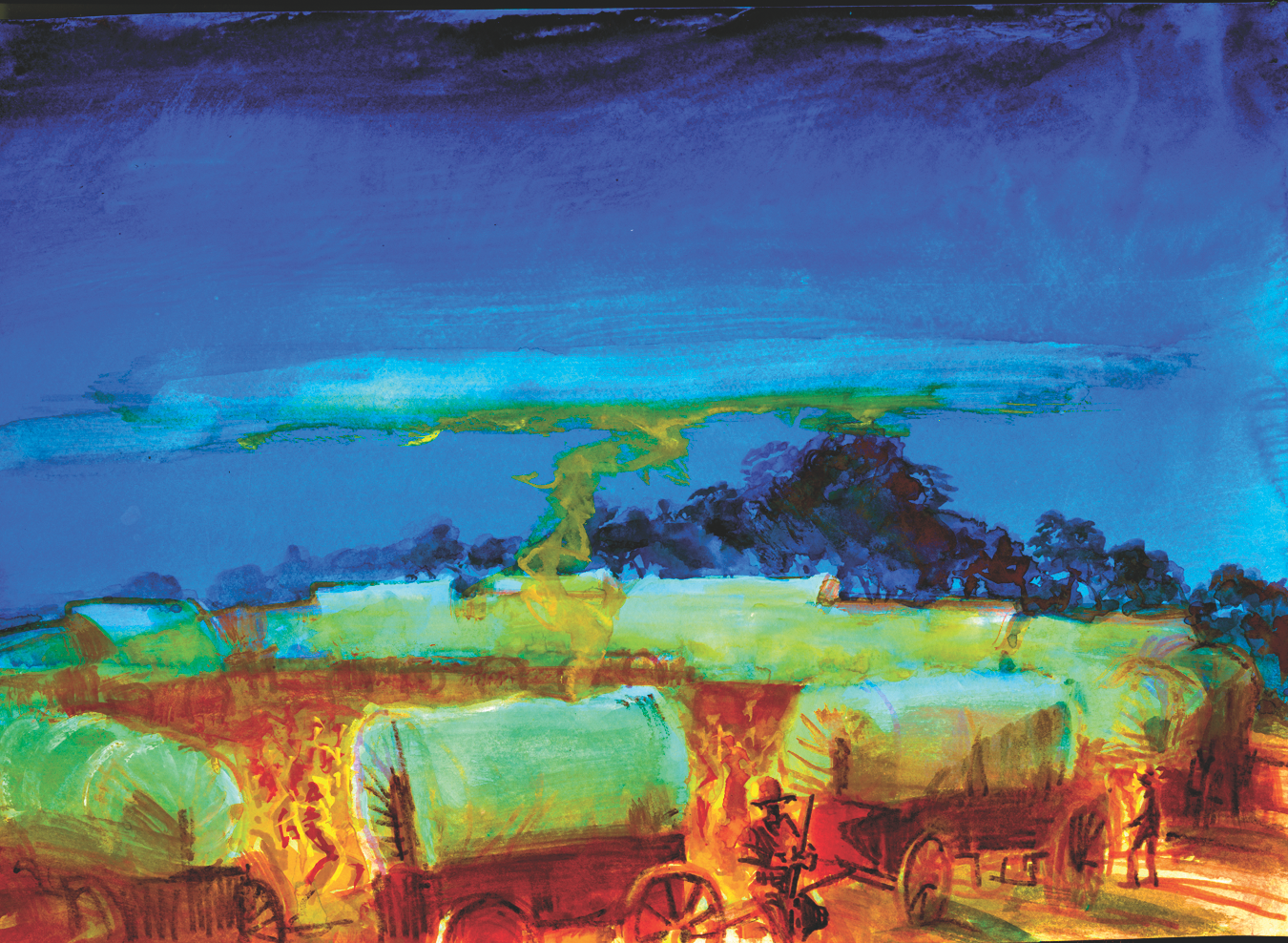
Of course, the good times didn’t last. Petty infighting, alternative visions and illnesses took their toll. So much so that by the time the wagon train reached Socorro, New Mexico Territory, the ranks had been cut in half. Once those dwindling number of immigrants reached Maricopa Wells (south of present-day Phoenix, Arizona), the wagons had been reduced to three.
A month later, one wagon would push on toward the Colorado River, where the Edenesque Land of Bashan allegedly awaited, at the confluence of the Gila and Colorado rivers. That wagon was piloted by Roys (also styled as Royce) Oatman.
From Maricopa Wells, the Oatman family took off alone. They had traveled 1,800-some miles and were 120 miles from their goal.
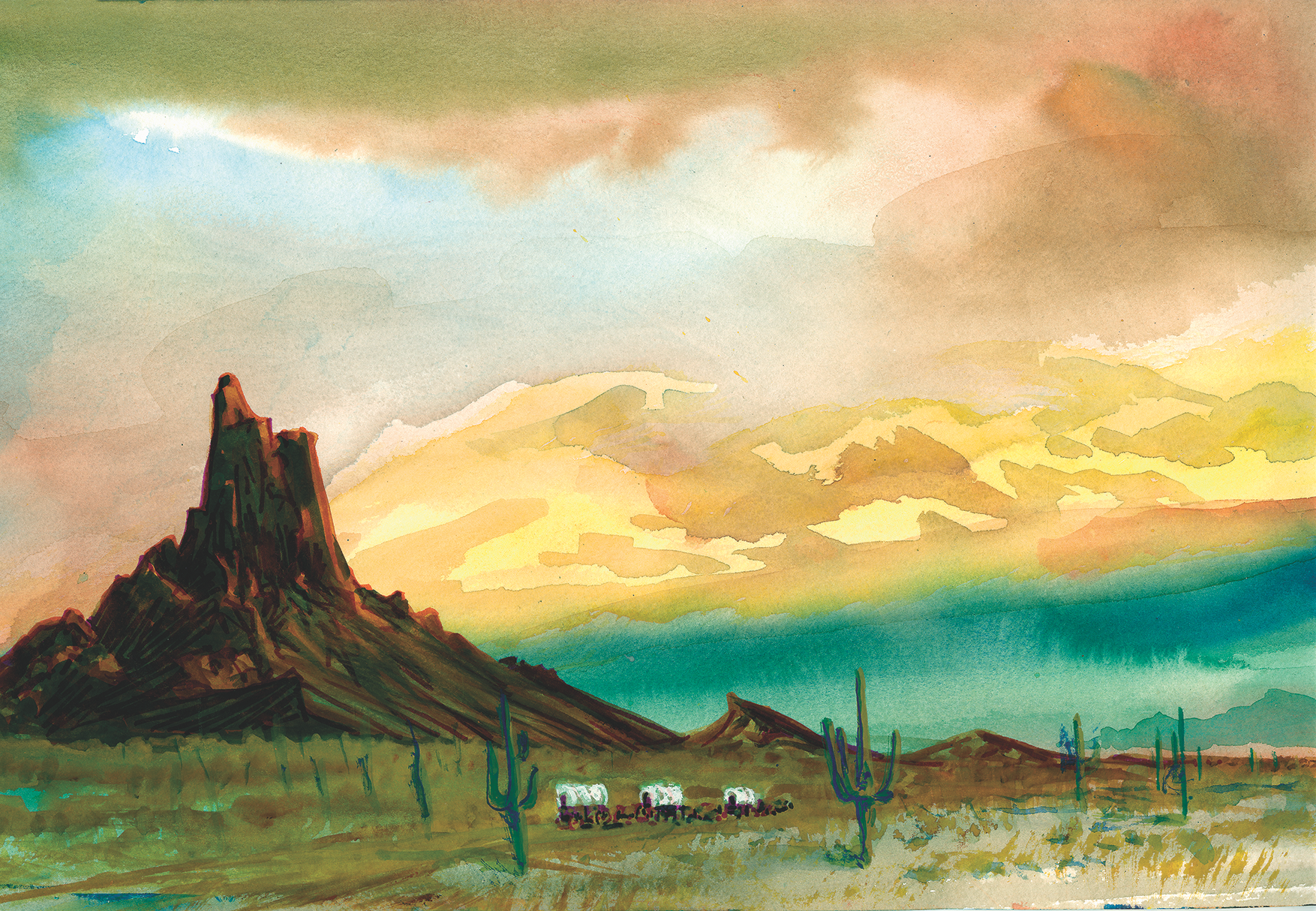
West of the great Gila Bend, the Oatman wagon bogged down and had trouble crossing the river. Halfway across, the oxen gave out; all the coaxing and pulling didn’t work. As nightfall set in, the family was able to push the wagon up on a sandbar, to try and wait out the surging water, so they could continue the journey.
The water kept rising into the night and even snuffed out the family’s meager fire. The kids huddled together under their wagon and one heard their father say, “Mother, mother, in the name of God, I know that something dreadful is about to happen.”
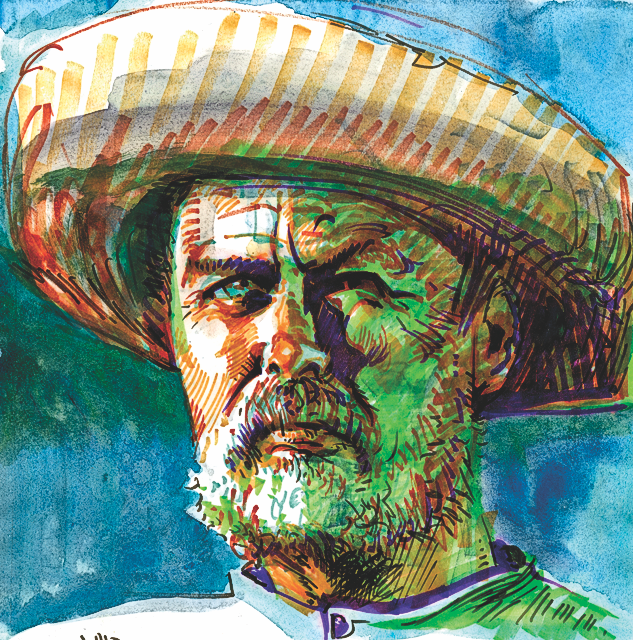
If Roys actually said this (the comment was attributed to him after the events that followed), no truer words have ever been spoken.
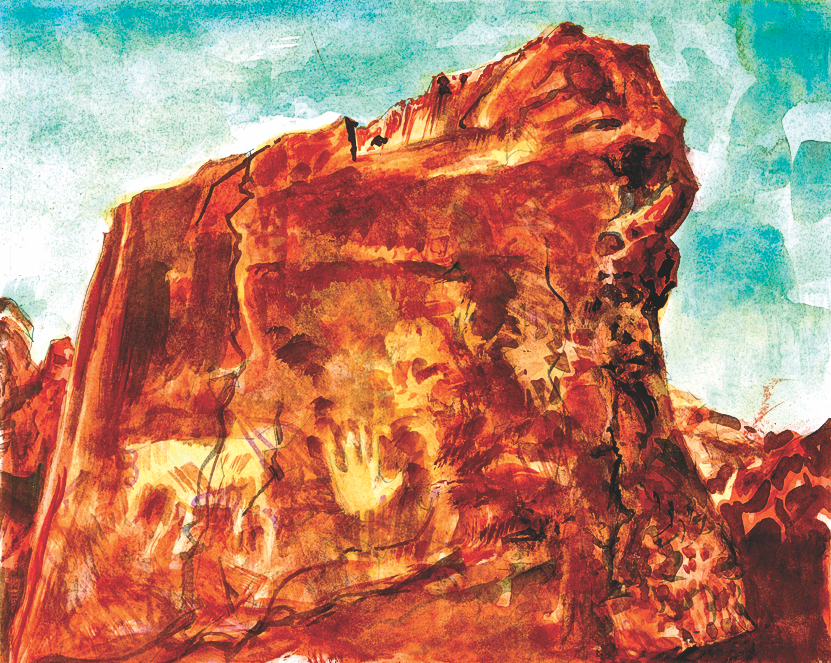
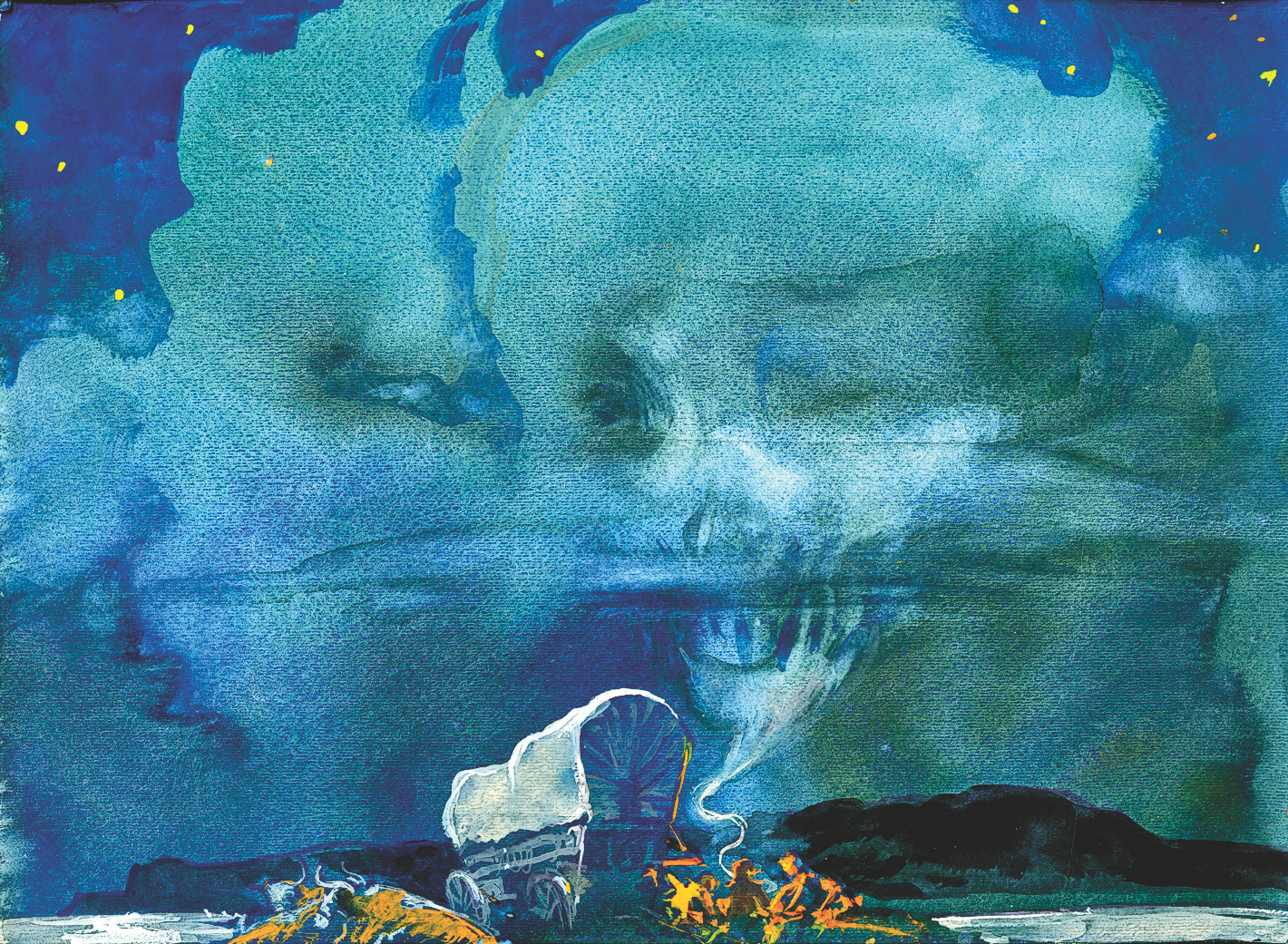
The Oatman Massacre
February 18, 1851
Roys Oatman and his family have just finished hauling their belongings up a rocky grade to a bluff on the south side of the Gila River. At the end of this long day, the Oatman oxen are bone-tired and so is the family.
Roys’ 38-year-old wife, Mary Ann, is eight-and-a-half-months pregnant, and she has just enough strength to prepare a pot of bean soup and some bread for the family to eat before they continue on. The family intends to travel all night to avoid the heat of the day. They are 120 miles from their destination.
The oldest boy, Lorenzo, 14, is loading up the last of the baggage in the wagon, when he turns and sees “several Indians slowly and leisurely approaching us in the road.”
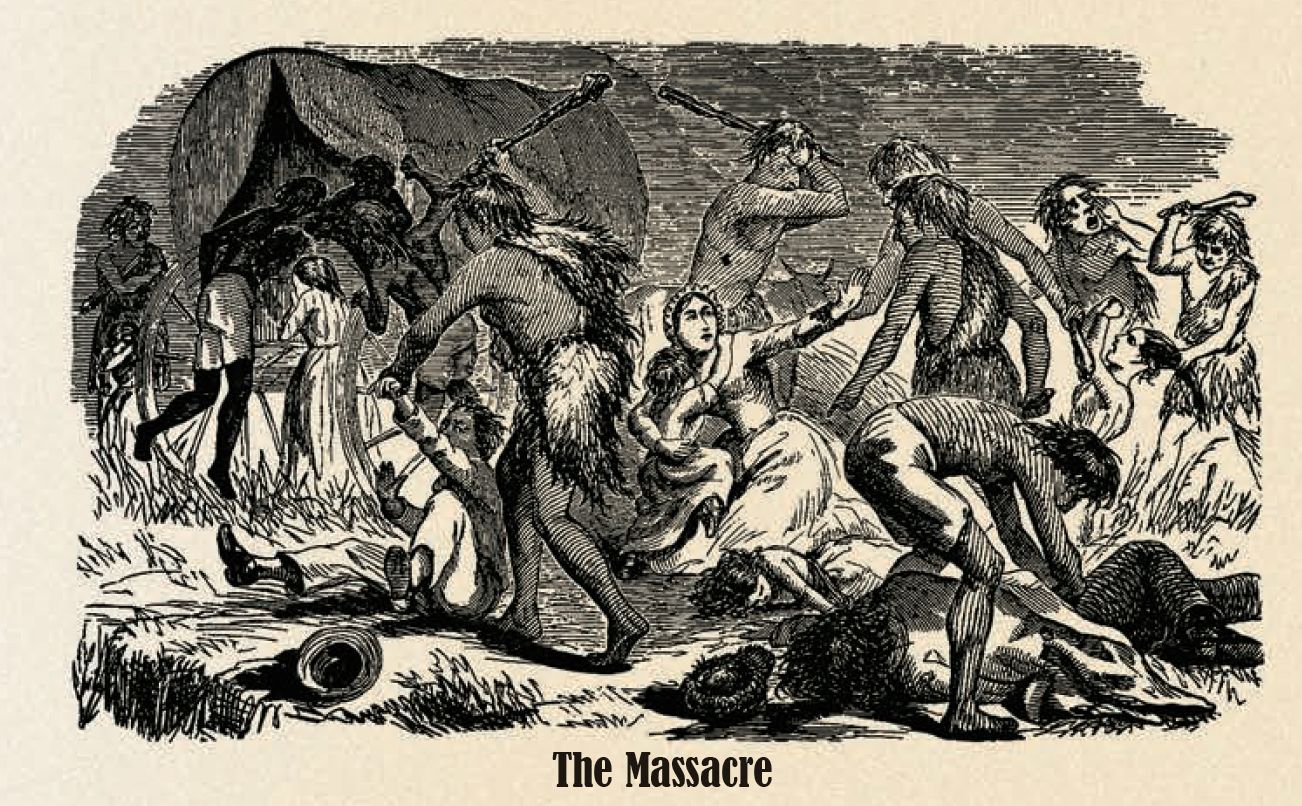
— Published in Captivity of the Oatman Girls by Royal B. Stratton –
Lorenzo later says they converse“with father in Spanish” and “made the most vehement profession of friendship.”
Roys is not armed. He has a rifle, but it is in the wagon. The Indians, thought to be Yavapais, ask for tobacco and pipe, which Roys promptly produces. After the warriors finish smoking, one of them mentions seeing “two horses down in the brush.” (An American traveler later reports that his two horses had been stolen the day before.)
The Yavapais ask for pinole (corn meal). Roys protests that he doesn’t have enough to give away, but they persist, and he reluctantly gives them some bread, which they eat. Then they ask for more.
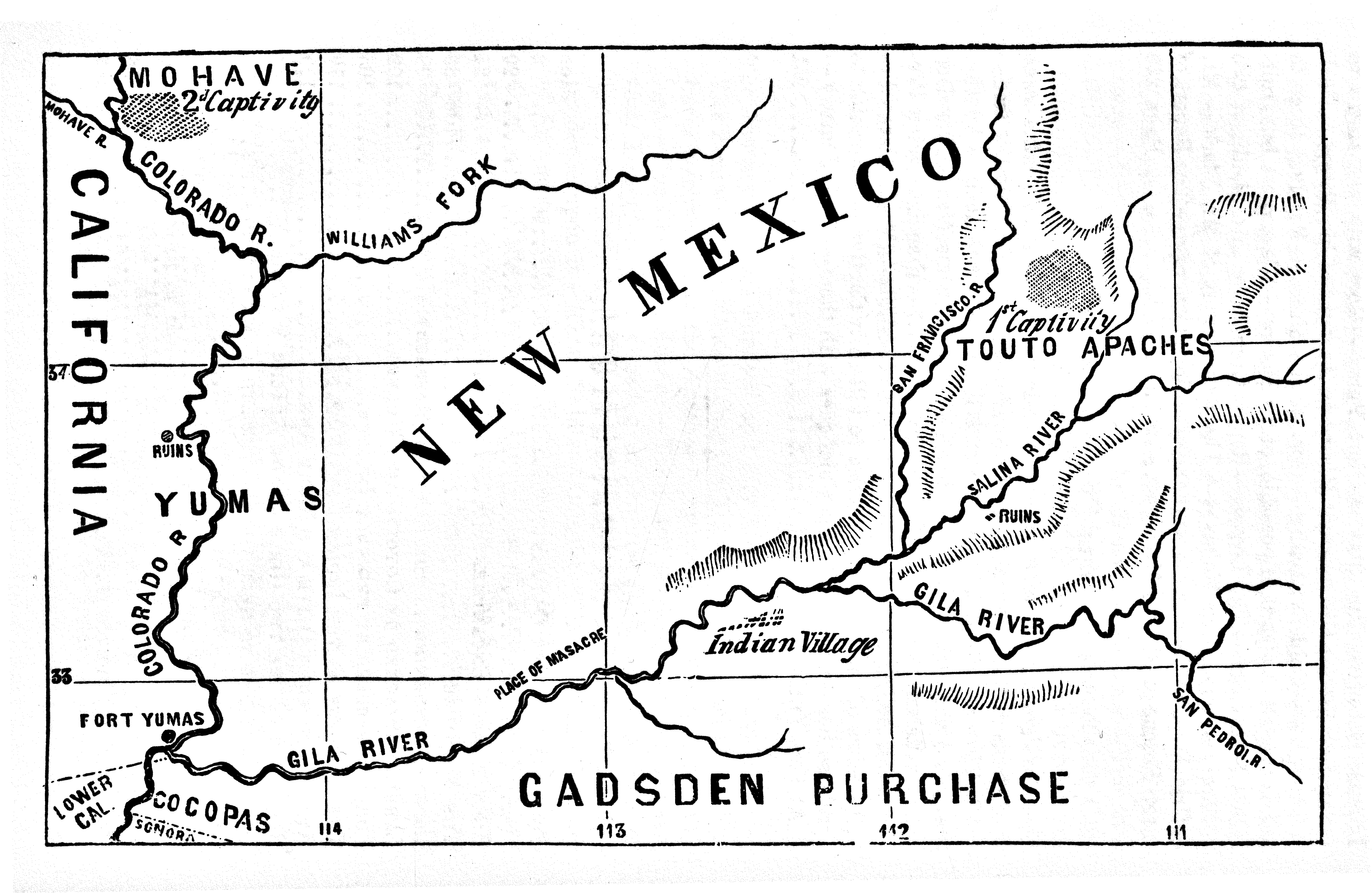
When Roys tells them that he doesn’t have any more, a Yavapai brazenly walks over to the wagon and climbs in the back, rummaging around inside. When he comes out, he demands meat.
The emboldened Yavapais start taking objects from the wagon and stuffing items in their clothing. When the family protests, the Yavapais withdraw a few paces and begin talking in their native tongue. Essentially, they are divvying up who will kill who, and who to spare.
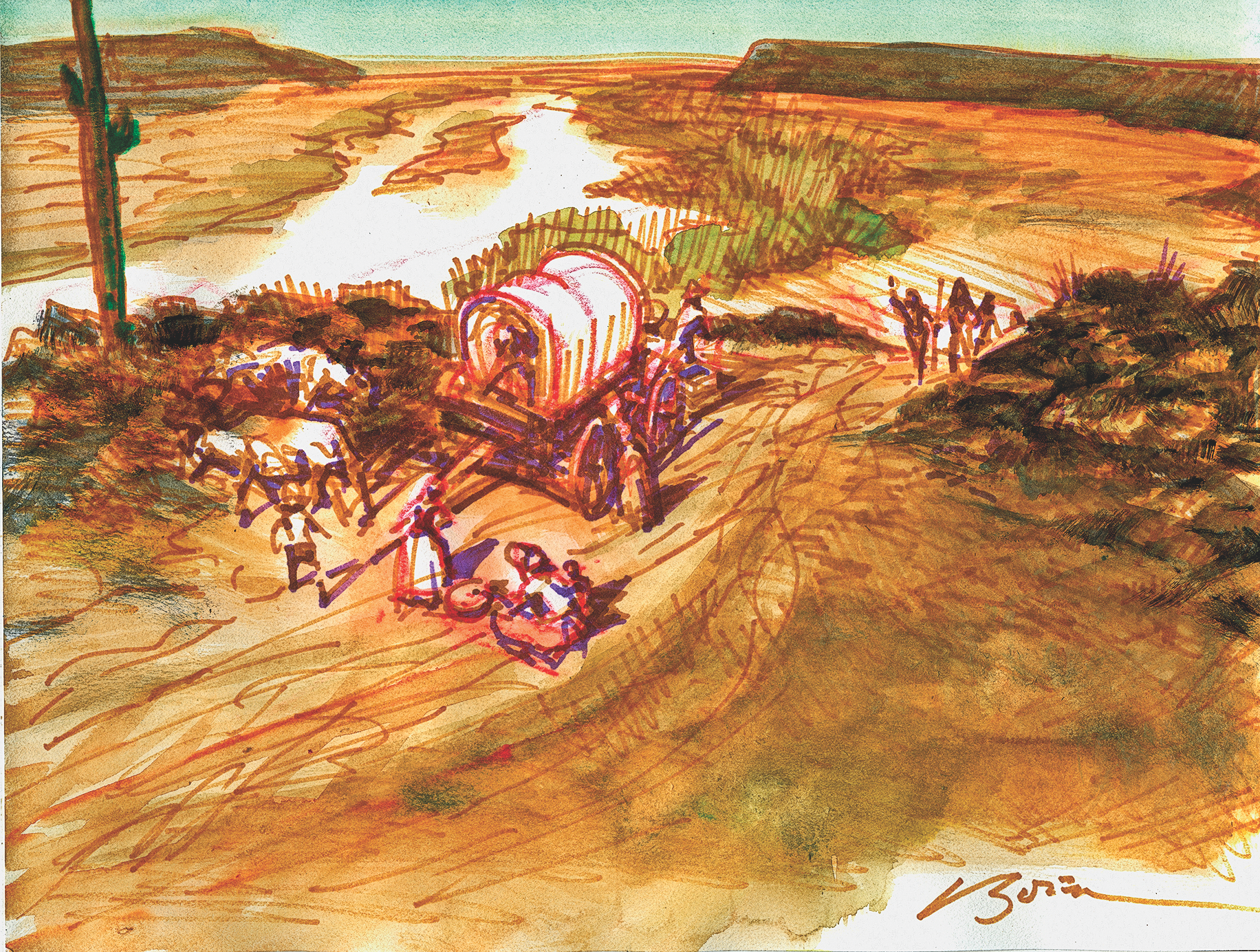
Roys tries to keep calm and starts reloading the wagon. At this point, a Yavapai lets out a “deafening yell,” and each warrior attacks a member of the family with a war club.
Roys, his wife, his daughters Lucy, 16, and Charity Ann, three, and his sons Roys Jr., five, and Roland, two, are brained senseless, falling to the ground. Lorenzo is also bashed on the head. With blood streaming down his face, he half-runs, half-stumbles toward the edge of the bluff and falls over the side.
Only two are spared: Olive, 13, and Mary Ann, eight, who are forced to watch the warriors strip their family’s dead bodies, looking for items of value. They take the wheels off the wagon and tear the canvas canopy off its frame. While breaking open boxes, the raiders also tear a feather bed, scattering its feathers to the wind.
The Yavapais unhook the oxen, bundle up their plunder and rudely push the girls in front of them. They take the sisters’ bonnets and shoes, and force the girls to walk barefoot toward the Yavapai camp, some 90 miles away.
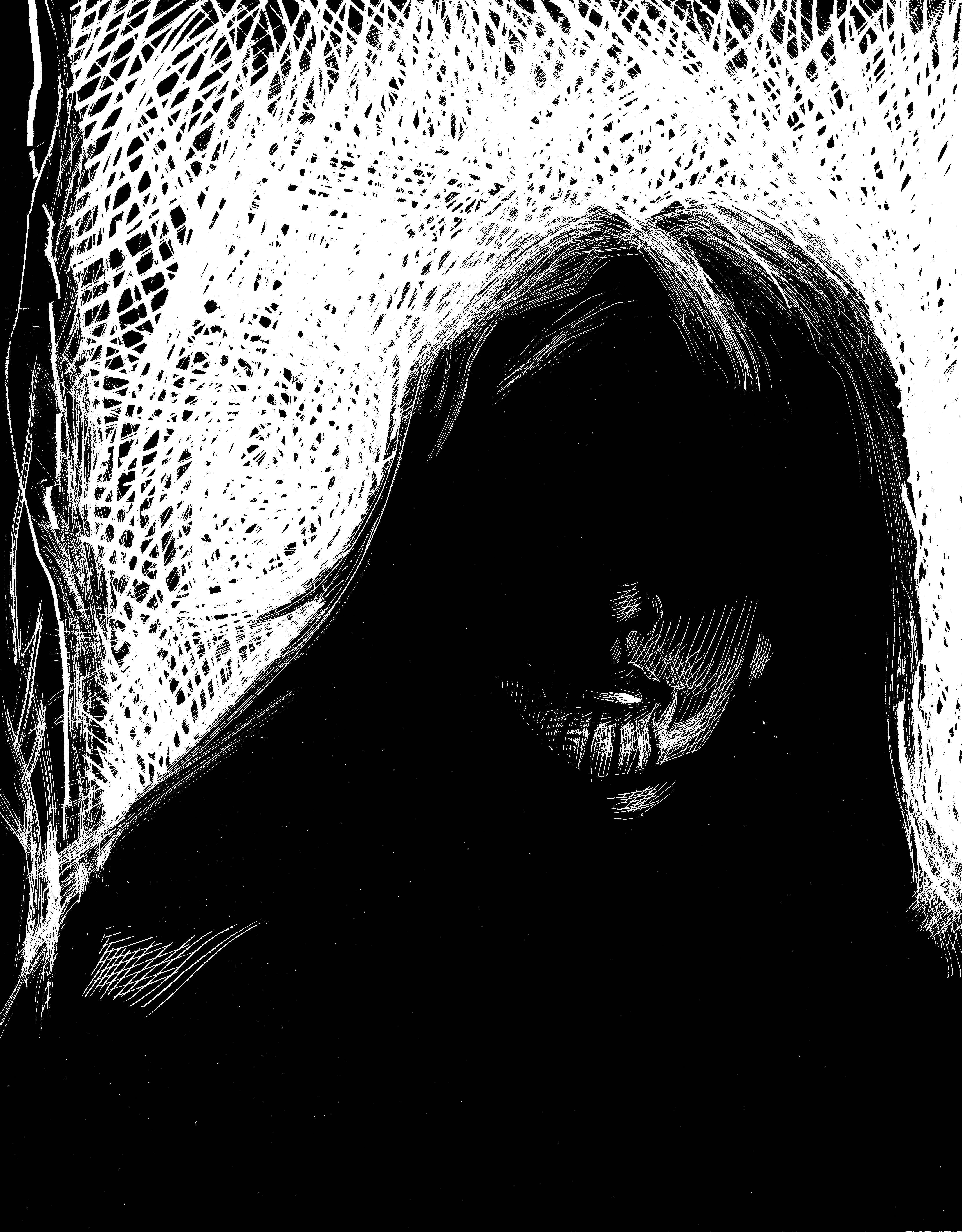
Olive Describes What Happens Next:
“After we had descended the hill and crossed the river, and traveled about one half of a mile by a dim trail leading through a dark, rough, and narrow defile in the hills, we came to any open place where there had been an Indian camp before, and halted.
“The Indians took off their packs, struck a fire, and began in their own way to make preparations for a meal. They boiled some of the beans just from our wagon, mixed some flour with water, and baked it in the ashes.
“They offered us some food, but in the most insulting and taunting manner, continually making merry over every indication of grief in us, and with which our hearts were ready to break. We could not eat.
“After the meal, and about an hour’s rest, they began to repack and make preparations to proceed.”
—Olive Oatman, describing the first grief-stricken moments of her five-year ordeal
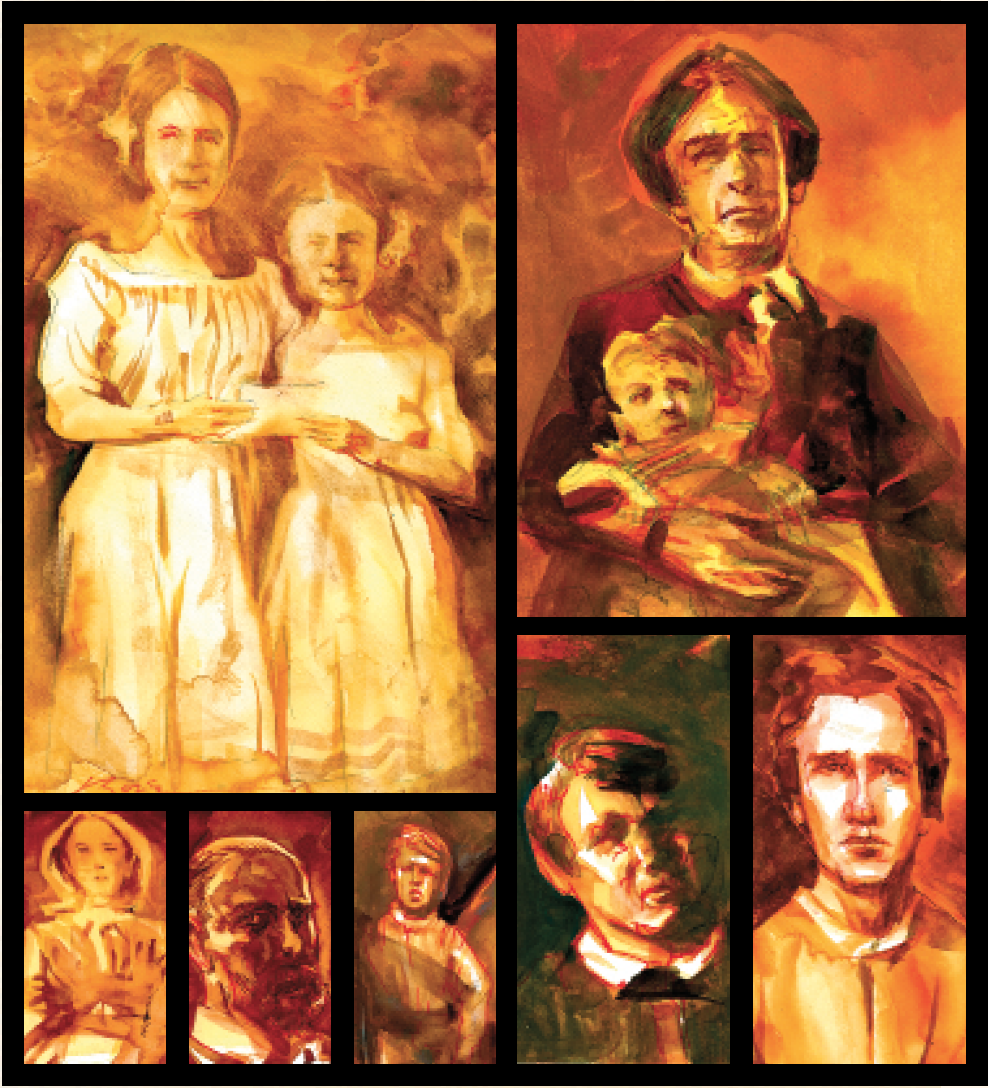
For almost a century, historians thought the raiders were Tonto Apaches and that they took the Oatman girls into the Tonto Basin area. Historians now believe the raiders were Yavapais, and that they took the sisters to a mountain camp in the Harquahala Mountains.
Since the Apaches did not traditionally trade with the Mohaves, where the girls ended up, the Indians were probably Yavapais, argues Brian McGinty in The Oatman Massacre.

